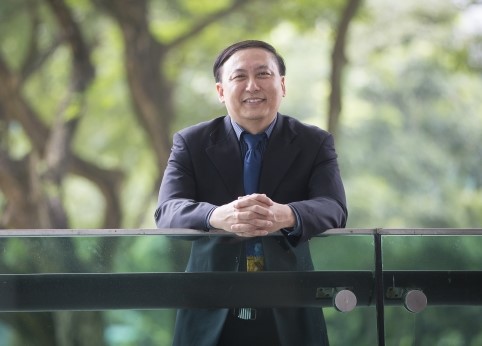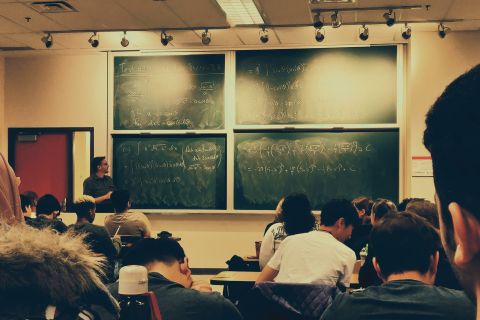
By Alvin Lee
SMU Office of Research – Rostering for labour-intensive industries, such as restaurants and F&B (food and beverage) outlets, is a perennial headache. Businesses have to factor in unexpected surges in customer demand and rostered staff calling in sick, resulting in the dreaded crowded understaffed restaurant. Throw in high staff turnover, and it is easy to appreciate restauranteurs’ near-obsession with manpower scheduling.
SMU Professor of Computer Science Lau Hoong Chuin has been working on an AI Singapore 100 Experiments (100E) project titled ‘Next generation roster management via reinforcement learning’ to build software to optimise the staffing at restaurants. The project sponsor, multinational HR and payroll services provider BIPO Service (Singapore) Pte Ltd, supplied Professor Lau with data such as rostered hours and overtime pay to develop an algorithm to better staff its clients’ F&B outlets. Considerations such as business volume and staff leave applications were also factored in.
Whereas most other industries can count on a relatively stable number of full-time employees, food outlets increasingly rely on gig workers.
“Restaurants these days hire a lot of such workers who can choose to take on a task or a shift instead of being obliged to show up when they are rostered as they would as a traditional employee,” explains Professor Lau. “So, we did away with all the shift scheduling and instead looked at task scheduling in the context of the gig economy.
“These gig workers can input into the system their preference for when they want to work, the duration of work, and the gap from one shift to the next. The algorithm then matches the demand and supply.”
He adds: “But F&B outlets have a lot of uncertainty in their demand for workers as well. For example, a marketing campaign may attract a larger crowd, as would school holidays. There is a demand prediction function in the project that we added on to the scheduling part – this will help match manpower demand and supply.”
Artificial Intelligence solving real-world problems
The benefits of the final software, which combines Reinforcement Learning (RL) and constrained optimisation using libraries such as Google OR-Tools and PyTorch, will include the ability to pre-empt “unforeseen circumstances such as changing of staff leave days, unplanned leave and absence without leave.” Updating of rosters can be done within minutes instead of a day when done manually, while the removal of the human headcount responsible for scheduling translates to a permanent reduction in wage costs. Most significantly, the software will help mitigate the reliance on expensive overtime shifts put in by full-time staff, leading to expected savings of millions of dollars annually.
The project is one of numerous others that Professor Lau has secured in recent months, which are in “an area at the intersection of AI and Operations Research (OR),” he tells the Office of Research. “Traditionally, optimisation issues are addressed in a stylised and deterministic environment. It’s based on the assumption that you know when your customers need their food, or where your riders are in the context of logistics, etc. All you need to do is generate a plan, and that is easy. That’s how things were done in the last 30 to 40 years.
“AI helps us predict the operating environment better. We’ve been working on combining the AI, which helps with the prediction and optimisation. I have to predict when and where the demand will occur. I must then assign my resources so that my customers can get what they want on time in the most cost-efficient manner. This is where AI and OR come together in the most beautiful way.”
A similar project, ‘On Demand Delivery Assignment Recommender’, builds on the Collaborative Urban Delivery Optimisation (CUDO) platform that Professor Lau had helped develop. The industry partner, same-day delivery platform uParcel, wanted to optimise the routes its riders took and the load they took on, and also allow delivery companies to “trade” jobs in a marketplace to improve overall delivery efficiency.
Professor Lau explains that classic route planning is easy when “everything is known at the beginning of the day [and] you just have to come up with the most efficient delivery route.” The trouble comes when “new orders would come in and some orders get cancelled, and sometimes delivery riders become unavailable. You’ll need to make changes on the fly,” he elaborates.
“That’s when we looked to AI, but what is considered AI? What is considered OR? AI often gets all the credit, which shouldn’t be the case. The idea of reinforcement learning came to the forefront. It is a machine learning technique that is appropriate for sequential decision making in an uncertain environment. Over time, it learns to make decisions in real-time.
“We applied such an algorithm along with some ideas from recommender systems to come up with recommendations for the riders. The challenge is, when we give a job to a rider, he or she may not accept it. How do you anticipate this behaviour? How do you ensure, with high confidence, that a rider will take a job if it is offered? Time is wasted looking for another rider if the job is rejected, and your service to the customer is compromised.
“We have to bear in mind these considerations of customer demand, the riders’ behaviour, and the platform’s profitability. All three parties must be brought together by the algorithm.”
Be proactive!
This focus on real-world solutions is a feature of Professor Lau’s work, which also includes a supply chain resilience collaboration with IBM that won the Manufacturing Leadership Council’s 2023 Manufacturing Leadership Award under the “Digital Supply Chains” category. IBM saved “tens of millions of dollars” during the COVID-19 pandemic, says Professor Lau, pointing to how what he calls a “Scenario-Based Optimisation approach” helped correctly predict lockdown and ensured parts for high-end computer servers arrived when they were supposed to.
With a spate of research grants under his belt, some winning industry awards and others translating to millions of dollars in real-world impact, it raises the question: What is the secret sauce? And how does one get grantors to sign up in the first place?
“The grantor starts by looking at a faculty’s track record, so one must learn to collaborate, be a co-PI and build credibility,” Professor Lau says. “After that you just have to be persistent and go after the grants. I am proactive – if the company doesn’t call me, I’ll call them!
“Sometimes people are not that keen on working on industry-based projects. Some grants are for applied research while others are more academic in nature. There’s nothing wrong with pursuing the latter but I feel we should give ourselves the opportunity to work with industry and come up with ideas and tools that benefit society.”
Back to Research@SMU November 2023 Issue
See More News
Want to see more of SMU Research?
Sign up for Research@SMU e-newslettter to know more about our research and research-related events!
If you would like to remove yourself from all our mailing list, please visit https://eservices.smu.edu.sg/internet/DNC/Default.aspx

